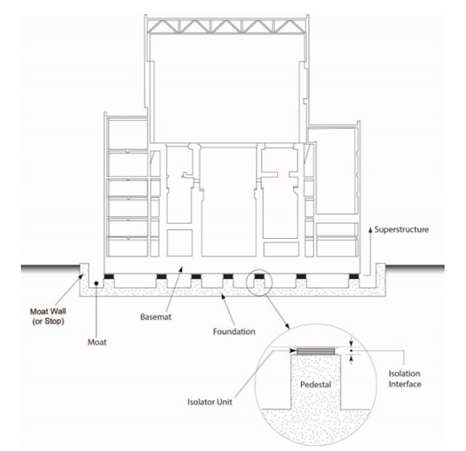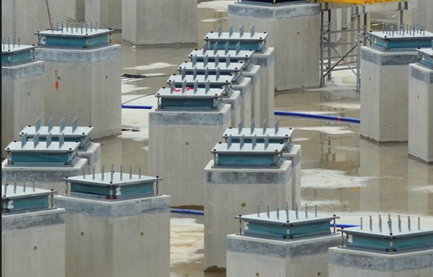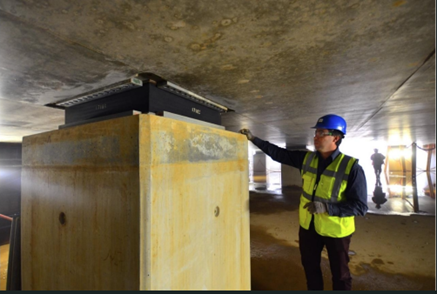Challenge
In anticipation of a requirement to undertake generic design assessments (GDA) for Small Modular Reactors (SMRs) and Advanced Modular Reactors (AMRs), we undertook a review of our knowledge gaps and identified topics where further research would be required. One such topic was the seismic isolation of reactors, where a layer of flexible ‘aseismic’ bearings are used to limit the effects of earthquakes on the reactor and to allow standard designs to be used without the need for detailed re-analysis of each site location. This technique has been used in other industries, but its use on nuclear installations is considered innovative and it has never been used for nuclear power plants in the UK.
In 2023, we commissioned independent research into the application of seismic isolation to SMRs and AMRs in the UK. This was driven both by the lack of applicable research and guidance and the expectation that the Rolls-Royce SMR design would incorporate seismic isolation. The aim of the research was to establish relevant good practice (RGP), provide requesting parties with appropriate guidance and equip us to carry out independent, effective assessment of designs based on up-to-date information.
Approach
Reflecting the technology’s innovative nature, our existing guidance contained little that was directly applicable to seismic isolation. A number of European codes and standards covered the topic but were not written for nuclear applications. Some United States codes and standards covered seismically isolated nuclear facilities but have significant differences from European practice. Our research focused on reviewing the most relevant published regulatory guidance and international codes and standards. The research also captured learning from the recent installation of seismically isolated research reactors in France.
The research included discussion on aspects of the safety case, design, specification, testing, installation, inspection and maintenance and summarised what is considered to be RGP within the UK context. This was presented in the form of a set of expectations, which are not intended to be prescriptive but to provide a benchmark for the potential approaches that are considered likely to satisfy UK regulatory requirements. They will be beneficial to requesting parties who wish to consider seismic isolation in their designs.
Outcome
In 2024-25, we have been undertaking Steps 2 and 3 of the GDA of the Rolls-Royce SMR design, the first reactor design to propose the use of seismic isolation in the UK. The regulatory expectations derived from our research have been key to the assessment of the design. The requesting party was fully briefed on the research, which has allowed constructive engagement throughout the GDA process, providing significant efficiencies and minimising uncertainty. The research has ensured we are better informed in this novel and complex area and thus able to act in a timely and decisive manner in clearly setting out regulatory expectations. This approach has minimised the risk that there will be unresolved differences of opinion on this topic that might delay the completion of the GDA process.
The research has provided much needed regulatory guidance, which will be incorporated into future updates of our Technical Assessment Guides.
The timely completion of this research and the active use of its findings during GDA demonstrates that the work represents good value for money.
Download the research report
ONR-RRR-127 - Independent Research into the Seismic Isolation of SMRs and AMRs


